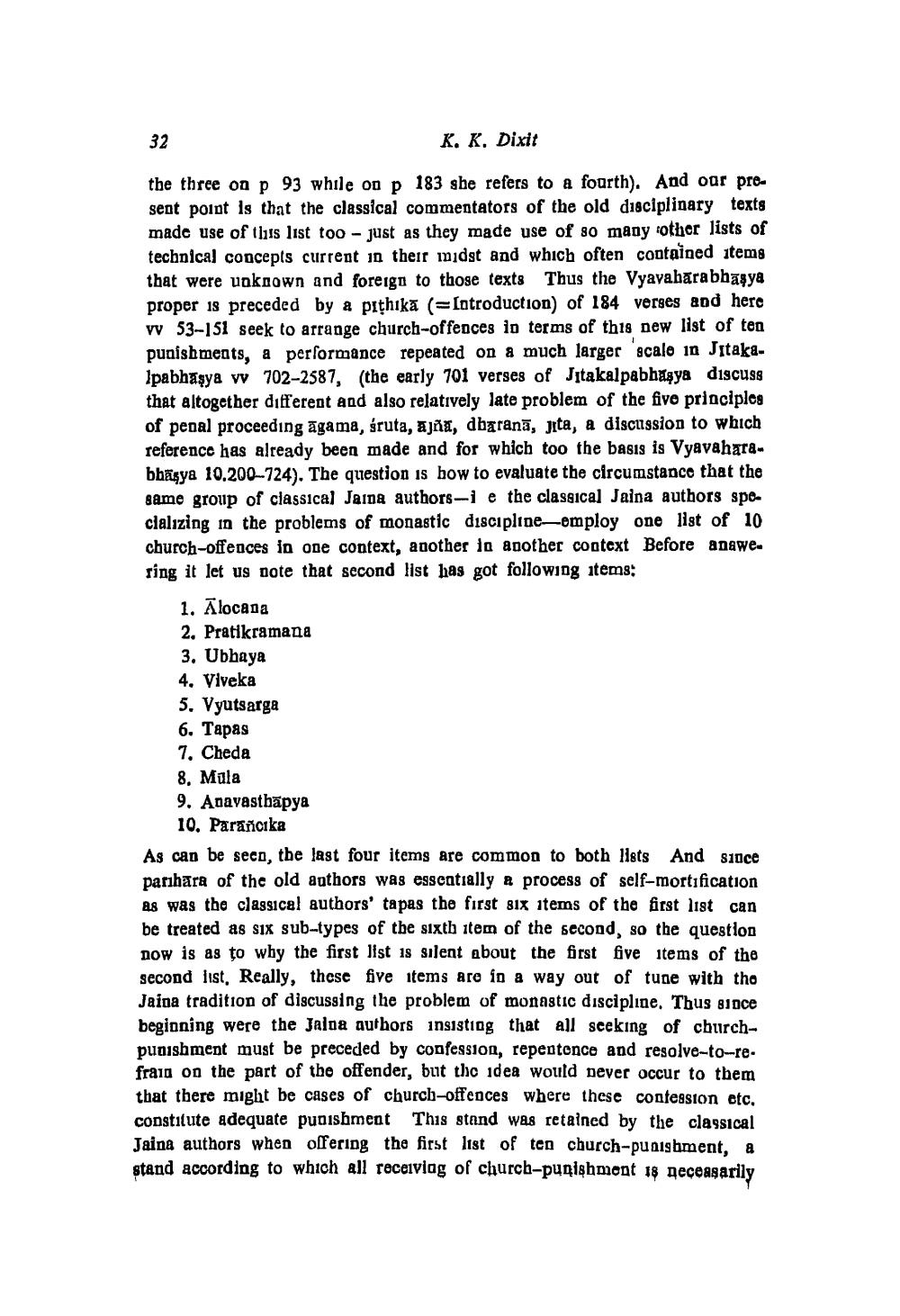________________
32
K. K. Dixit
the three on p 93 while on p 183 she refers to a foarth). And our present point is that the classical commentators of the old disciplinary texts made use of tliis list too - just as they made use of so many other lists of technical concepts current in their midst and which often contained items that were unknown and foreign to those texts Thus the Vyavaharabhagya proper is preceded by a pithika (=Introduction) of 184 verges and here v 53–151 seek to arrange church-offences in terms of this new list of ten punishments, a performance repeated on a much larger scale in JitakaIpabhasya v 702-2587, (the early 701 verses of Jitakalpabhagya discuss that altogether different and also relatively late problem of the five principles of penal proceeding āgama, śruta, ajña, dharanā, jita, a discussion to which reference has already been made and for which too the basis is Vyavahara. bbāşya 10.200-724). The question is how to evaluate the circumstance that the game group of classical Jaina authors-i e the clasgical Jaina authors speclalizing in the problems of monastic discipline-employ one list of 10 church-offences in one context, another la another context Before anawe. ring it let us note that second list has got following items:
1. Alocana 2. Pratikramana 3, Ubhaya 4. Viveka 5. Vyutsarga 6. Tapas 7. Cheda 8. Mala 9. Anavasthāpya
10. Parancika As can be seen, the last four items are common to both lists And since parihara of the old authors was esscatially a process of self-mortification as was the classical authors' tapas the first six items of the first list can be treated as six sub-types of the sixth item of the second, so the question Dow is as to why the first list is silent about the first five items of the second list, Really, these five items are in a way out of tune with tho Jaina tradition of discussing the problem of monastic discipline. Thus since beginning were the Jalna authors insisting that all seeking of churchpunishment must be preceded by confession, repentence and resolve-to-refrain on the part of the offender, but the idea would never occur to them that there might be cases of church-offences where these contesston etc. constitute adequate punishment This stand was retained by the classical Jaina authors when offering the first list of ten church-punishment, a stand according to which all receiviag of church-punishment 18 geceasarily




